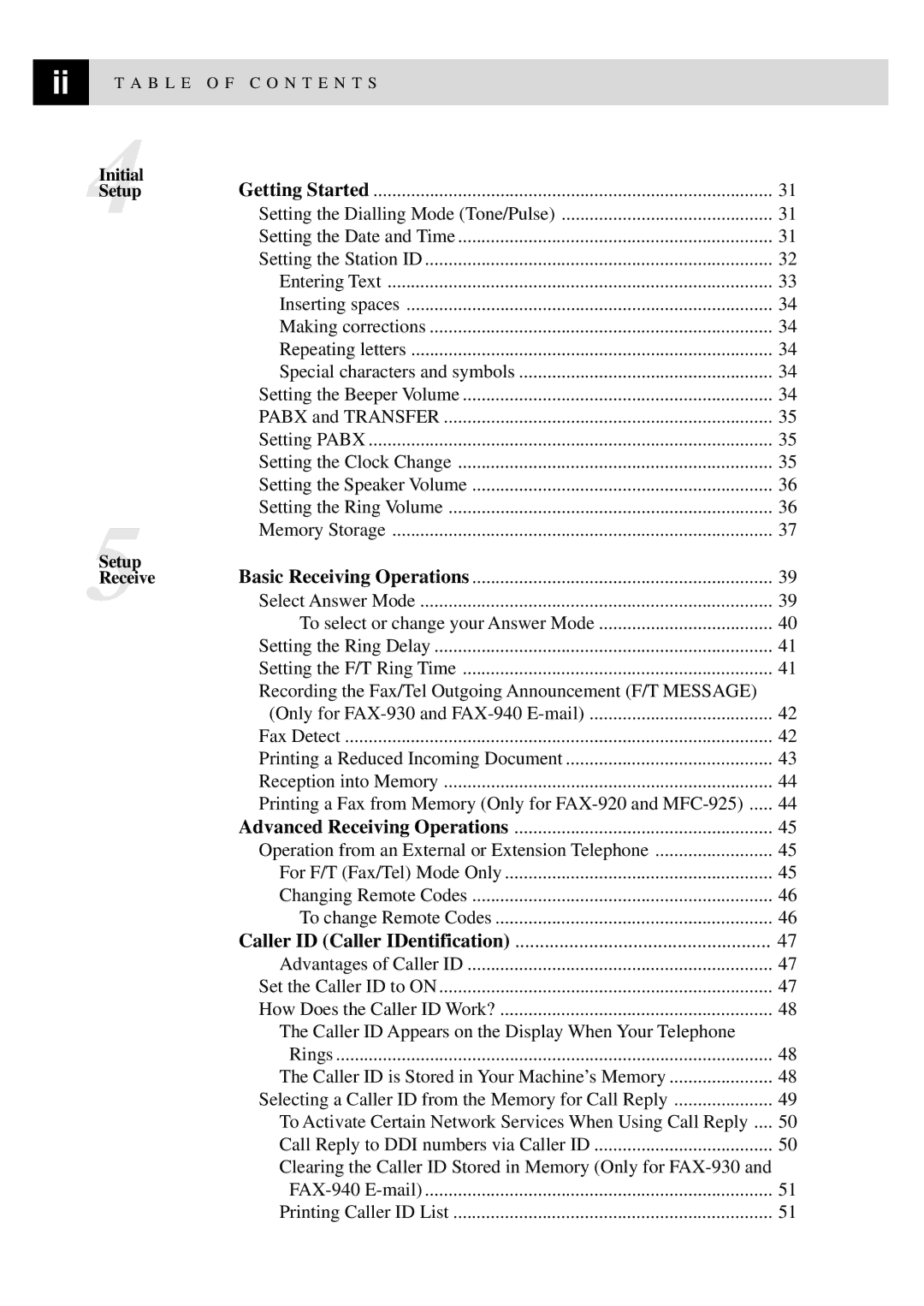ii | T A B L E O F C O N T E N T S |
|
4Initial Setup
5Setup Receive
Getting Started | 31 |
Setting the Dialling Mode (Tone/Pulse) | 31 |
Setting the Date and Time | 31 |
Setting the Station ID | 32 |
Entering Text | 33 |
Inserting spaces | 34 |
Making corrections | 34 |
Repeating letters | 34 |
Special characters and symbols | 34 |
Setting the Beeper Volume | 34 |
PABX and TRANSFER | 35 |
Setting PABX | 35 |
Setting the Clock Change | 35 |
Setting the Speaker Volume | 36 |
Setting the Ring Volume | 36 |
Memory Storage | 37 |
Basic Receiving Operations | 39 |
Select Answer Mode | 39 |
To select or change your Answer Mode | 40 |
Setting the Ring Delay | 41 |
Setting the F/T Ring Time | 41 |
Recording the Fax/Tel Outgoing Announcement (F/T MESSAGE) |
|
(Only for | 42 |
Fax Detect | 42 |
Printing a Reduced Incoming Document | 43 |
Reception into Memory | 44 |
Printing a Fax from Memory (Only for | 44 |
Advanced Receiving Operations | 45 |
Operation from an External or Extension Telephone | 45 |
For F/T (Fax/Tel) Mode Only | 45 |
Changing Remote Codes | 46 |
To change Remote Codes | 46 |
Caller ID (Caller IDentification) | 47 |
Advantages of Caller ID | 47 |
Set the Caller ID to ON | 47 |
How Does the Caller ID Work? | 48 |
The Caller ID Appears on the Display When Your Telephone |
|
Rings | 48 |
The Caller ID is Stored in Your Machine’s Memory | 48 |
Selecting a Caller ID from the Memory for Call Reply | 49 |
To Activate Certain Network Services When Using Call Reply .... | 50 |
Call Reply to DDI numbers via Caller ID | 50 |
Clearing the Caller ID Stored in Memory (Only for |
|
51 | |
Printing Caller ID List | 51 |
